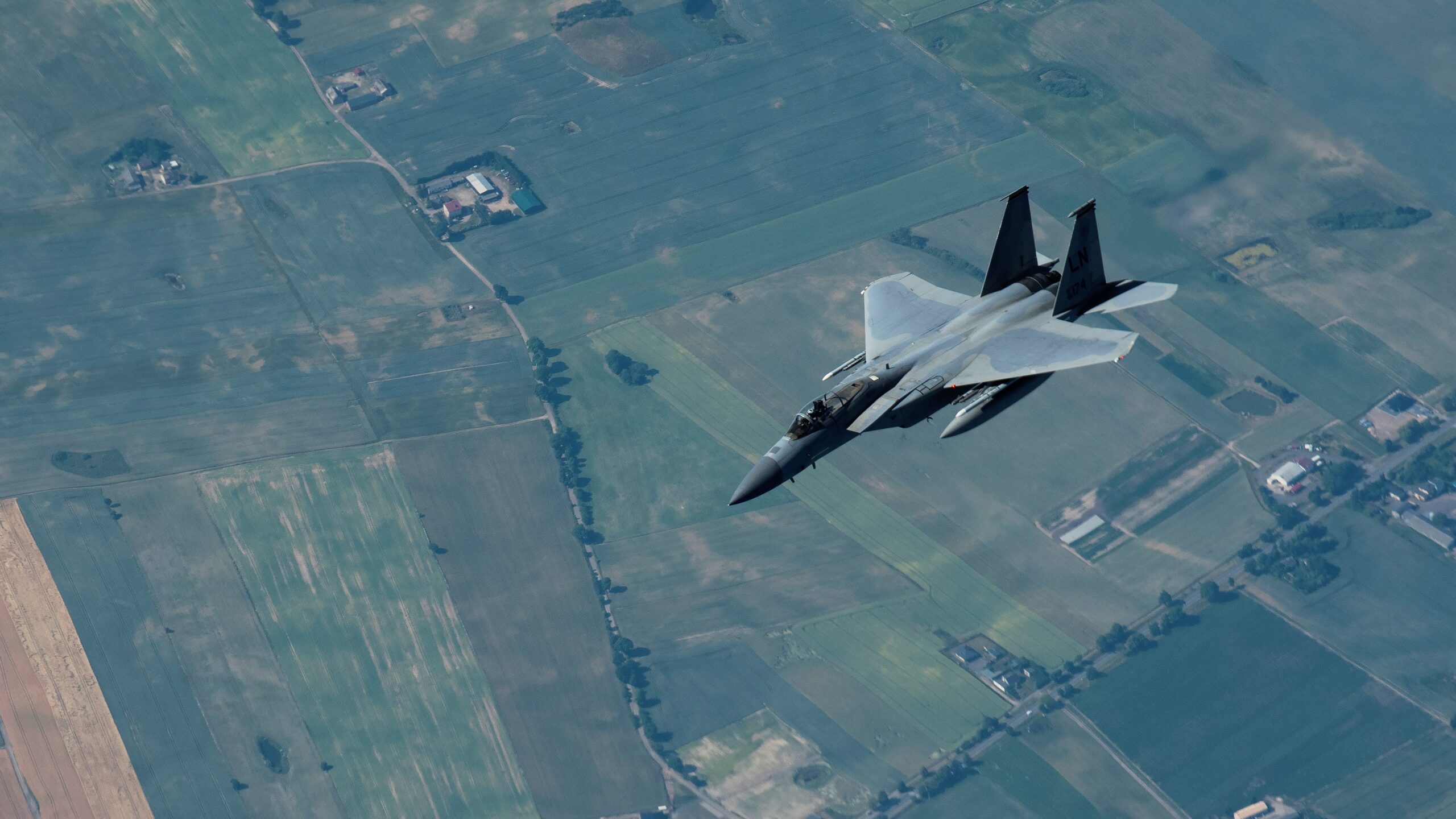
A U.S. Air Force F-15C Eagle from the 48th Fighter Wing departs after receiving air-to-air refueling from a KC-135 Stratotanker from the 100th Air Refueling Wing over the Baltic Sea region, June 29, 2021. (U.S. Air Force photo by Tech. Sgt. Westin Warburton)
WASHINGTON — For years, the Air Force has sought to procure 72 fighters annually as part of its budget request, and in fiscal 2024, the service was finally able to meet its goal.
But looking across the five-year spending outline known as the Future Years Defense Plan (FYDP), that procurement level could be difficult to sustain, a top Air Force general said today.
“It’s not a one-time thing. I certainly think you’ll see it again,” Lt. Gen. Richard Moore, Air Force deputy chief of staff for plans and programs, said of the 72-fighter benchmark during a virtual panel hosted by the Mitchell Institute. But Moore emphasized that current fighter procurement figures draw from the production of F-15EXs, and in the service’s FY24 budget request, officials indicated they are seeking to complete the buy of the jet in FY25, raising potential challenges for maintaining a similar level of fighter purchases going forward.
“Part of what’s important here is the composition of that 72 aircraft that includes both F-35s and F-15EXs,” he said. “So, as we reach what we believe is a sustainable fleet size and what we need in the F-15EX, we’ll have to see what capacity is available in the F-35 or whatever else it may be that we look at.
“I do think that right now is predicated on the fact that we have two hot fighter production lines. And that won’t be the case certainly by the middle or end of the FYDP,” he added.
Air Force officials have said that benchmark for yearly fighter purchases provides more modern capabilities and relief to offload aging predecessors like the A-10 and older F-15 models.
Moore sought to recast the Air Force’s plan to divest in older fleets to shift money toward development for future efforts like the Next Generation Air Dominance (NGAD) fighter. Though the Air Force is eyeing a net loss of 1,000 airplanes over the next five years, Moore said that particularly with fighters, the service’s strategy functionally results in a net gain.
“If you look at the fighter fleet, as an example, there are over 600 divestitures, but there are also procurements,” Moore said. Presuming that A-10s are not part of the “high-end fight” and acknowledging F-15Cs are rapidly aging, he said, “We actually have a net gain in procurement — a small one, only 12. But of the airplanes that are left that we’re divesting in that portfolio and the ones we procure, we actually increased by 12 the number of aircraft that will be a part of the future fight. So I think there’s a story here that isn’t quite as necessarily as negative as it’s being portrayed.”
After Congress blocked the request last year, the Air Force is once again seeking to retire older Block 20 F-22s that service officials emphasize are not combat coded. Moore said though the aircraft serve training purposes, the roughly $500 million-a-year it costs to maintain them would be better spent on developing NGAD.
Should Congress once again reject the request without providing additional sustainment dollars, Moore said “there’ll be a half-a-billion dollars of something that won’t get done.” Alternatively, bringing those F-22s up to combat capability could also prove to be costly and time consuming. Moore estimated that such an effort would take approximately a decade and require $3.5 billion, which could further strain development on the F-35 since Lockheed Martin “is not fully staffed for engineers” and may have to “pull some engineering talent” off the Joint Strike Fighter to instead focus on the F-22s.
“That is a trade to us that doesn’t make any sense at all,” he said.
Pointing to the war in Ukraine, where officials have said highly effective air defenses have mutually denied air superiority, Moore said it was crucial that the Air Force directs resources toward developing next-gen technologies that will prevail in a conflict with a peer adversary.
“We don’t want the bloodbath that’s going on in Ukraine right now,” Moore said. “We have to get to the advanced capability that it takes to change the battlefield.”






















